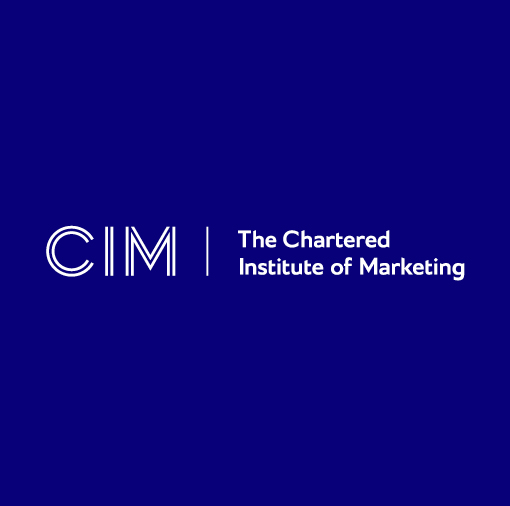
Interview: Ordnance Survey - Using brand and innovation
The UK’s national mapping agency, Ordnance Survey (OS), has a history stretching back more than 200 years. Now, the internet age is presenting new frontiers for the brand to explore. Marketers, therefore, have an important role to play in driving business growth and meeting consumer needs, according to Claire Savage, head of brand marketing.
How brand managers promote growth
“For brand managers and marketers, it’s vital to identify how much your brand is worth,” says Savage. “Answering that helps you to understand how the brand can contribute to and fill gaps in the business strategy. If you’re targeting a particular market or industry and you have a revenue goal, for instance, you can see what part brand has to play in that.”
For OS, broadening its offer into new markets at home and abroad is a key element of its business strategy. While its paper maps are already the trusted companion of walkers and ramblers, a new generation of customers has emerged who use online mapping tools as a default, and who know less about the OS brand.
Savage explains that this required a strategy that leveraged the high levels of brand trust and authority, while staying true to the core brand essence.
“Existing customers really feel like they own the brand, therefore we consider ourselves to be more like custodians. As such, we make sure any repositioning takes places after a lot of careful thought. There’s always a dilemma: we want to go where the customer wants to go. But if we change too much, there’s a risk of losing the DNA of what they loved in the first place.”
Building innovation into your strategy
Meanwhile, the competitive landscape has altered significantly for OS, due to the explosion in digital technology, online mapping, and data services over the past decade. Savage explains how OS builds innovation into its strategy in order to stay competitive.
“I think for us the process is more straightforward than for other brands. We’ve been around for two centuries and, naturally, we’ve had to adapt. Our whole business is built around innovation; it’s in our blood.”
Savage explains that OS operates a long-term innovation programme, supported by quick-wins along the way. She cites a recent example of the latter, in which an OS graduate student built a Minecraft world out of digital map products, using OS open data. This world consisted of more than 83 billion blocks representing over 220,000 square kilometres of mainland Great Britain and its surrounding islands.
“This project resulted in half a million downloads and won us a lot of exposure,” Savage confirms. “Although we’ve always been the national mapping agency, people don’t always see us a technology company. These kinds of campaigns are helping to change this perception and give our audiences the sense that OS is a relevant technology company.”
Innovating with augmented reality
How does an innovation-focused company such as OS distinguish between game-changing disruptors that produce long-term value for the brand, and those that are not so successful?
“Not all innovations get taken up,” explains Savage. “Many of our initiatives take place internally. Around 10 years ago, we invented a type of geographic augmented reality (AR) system. Eventually, we decided it wasn’t the right time for this technology. But obviously, AR has recently come to the forefront with executions like Pokémon Go. Overall, we try to put ourselves in the position of trusted advisors to our customers, to push what we think will be important.”
With Google Maps clocking up one billion users every day, other organisations are raising the bar in terms of customer experience. However, as Savage explains, innovation comes down to striking new partnerships as well as developing technology.
“Google has done absolutely amazing things for mapping. They’ve opened up mapping to the masses, which actually helps us. It highlights the importance of geo-location data for the consumer and drives change in terms of data usage. Consumers are becoming more demanding on the back of using services like Google. Many of these major providers use our open data sources, and we’re getting more and more accurate all the time.”
Also, as Savage explains, different users require different services. Google and similar tools are really powerful for city and residential navigation. However, some people find that these services are not sufficiently detailed at the smallest scale for walking or outdoor pursuits, since they omit footpaths, access information and contour lines.
Repositioning after a brand evaluation
According to Savage, reshaping the brand strategy in response to these changes took place after a careful evaluation. “First, we established the need to offer a consistent message, tailored for each audience. Second, we saw how important it was to be present and correct for each audience, while maximising the value of partnerships with our other organisations and industry leaders. Third, we shaped our brand values around the business strategy, part of which is to pursue growth internationally,” says Savage.
“The final stage is to build a governance model around our brand once we have the tools, materials and guidelines from the other initiatives. This is about auditing our brands, for example, ensuring they retain and contribute value across all our audiences.”
Like many marketers, Savage is conscious of the challenge of selling the strategy internally. “You need to be mindful of who you’re talking to. At the board level you’ve got to talk pounds, dollars and revenue. That’s where the brand valuation comes in; it’s vital to remember that brand sits on the balance sheets. Meanwhile, if you’re within a company that is looking to grow through merger or acquisitions instead of organically, you need to be aware of how the brand value of the target company compares with that of your own. This gives you powerful leverage in the boardroom.”
Savage highlights a key point: “Rather than sitting within a central function, brand belongs to everyone. To this end, we have an education programme, and a network of brand ambassadors who are educated on how the brand works. We try to be as transparent as possible in terms of what the brand means, what our plans are, and why we’ve made our decisions.”
Mapping a future strategy
And how are marketers looking to drive growth in the future for OS, and what does the innovation roadmap look like?
“We’re thinking years and years ahead, preparing for changes to the environment and consumer needs. This sees us working with a lot of corporate partners and also governments. For example, we’re working on smart cities, blockchain technology, and considering how OS can be involved with land administration.”
After 200 years of helping people to navigate the physical landscape, OS’s marketing strategy is well-positioned to embrace the changes taking place among customers. Marketing clearly has a key role to play in promoting growth, by bringing the brand to new audiences and ensuring innovation remains central to strategy.
More Stories
Fact Sheet 
An overview of CIM our history and services.
Sign up for the latest news
We’ll always treat your personal details with the utmost care and will never share or sell them to third parties. You are always in control of how we contact you – you can change your contact preferences at any time. For more information, visit our privacy policy.
To receive sector specific news:





